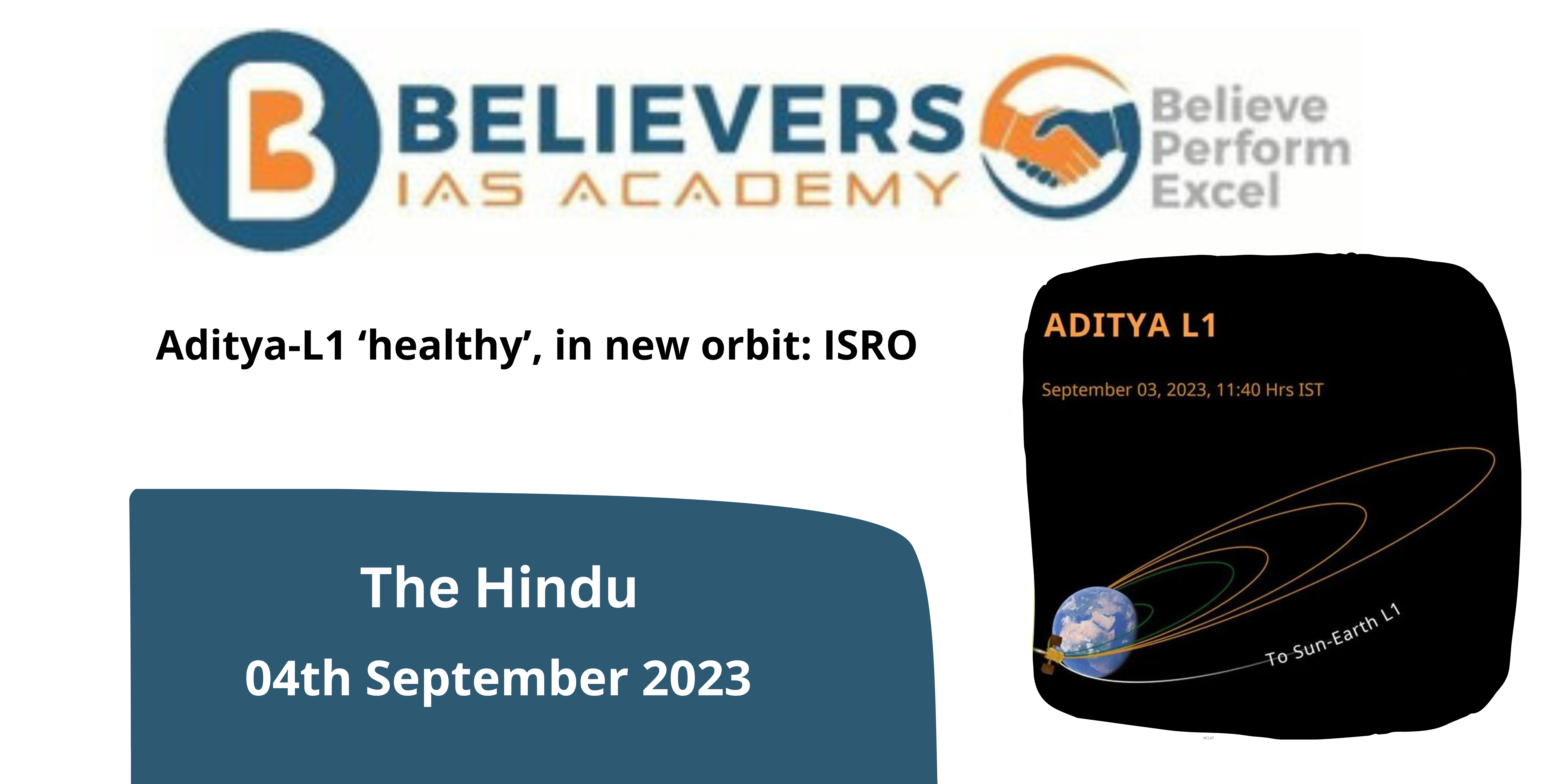Aditya-L1 ‘Healthy’, in New Orbit: ISRO
Context
Aditya-L1, India’s first solar observatory project, which was launched on Saturday, received its first earthbound fire on Sunday from the Indian Space Research Organization (ISRO).
What is Aditya-L1?
- The first Indian mission to study the Sun in space will be called Aditya L1. The spacecraft will be launched into a halo orbit around the Lagrange point 1 (L1) of the Sun-Earth system, which is situated approximately 1.5 million kilometres from Earth. The main benefit of having a satellite in the halo orbit around the L1 point is that it can observe the Sun continually without being obscured by Occultations or eclipses.
What are the payloads that Aditya L1 is carrying on board?
Visible Emission Line Coronagraph(VELC):
- The Visible Emission Line Coronagraph (VELC) was created at the Bangalore-based Indian Institute of Astrophysics.
- investigates the solar corona and the CME (Coronal Mass Ejection) dynamics.
Solar Ultraviolet Imaging Telescope (SUIT):
- The Inter-University Centre for Astronomy & Astrophysics in Pune developed the Solar Ultraviolet Imaging Telescope (SUIT).
- Ultraviolet (UV) images of the solar photosphere and chromosphere.
- determines variations in near UV solar irradiation.
Aditya Solar Wind Particle Experiment (ASPEX):
- The Physical Research Laboratory in Ahmedabad developed the Aditya Solar Wind Particle Experiment (ASPEX).
- investigates the distribution of energy in the solar wind and energetic ions.
Plasma Analyser Package for Aditya(PAPA):
- At the Vikram Sarabhai Space Centre in Thiruvananthapuram, the Space Physics Laboratory developed the Plasma Analyser Package for Aditya (PAPA).
- investigates the energy distribution of the solar wind and energetic ions.
Solar Low Energy X-ray Spectrometer (SoLEXS):
- The U. R. Rao Satellite Center in Bangalore developed the Solar Low Energy X-ray Spectrometer (SoLEXS).
- studies solar X-ray outbursts across a broad X-ray energy spectrum.
High Energy L1 Orbiting X-ray Spectrometer (HEL1OS):
- The Bangalore-based U R Rao Satellite Centre developed the High Energy L1 Orbiting X-ray Spectrometer (HEL1OS).
- studies solar X-ray outbursts across a broad X-ray energy spectrum.
Magnetometer Payload:
- The Laboratory for Electro-Optics Systems in Bangalore developed the Magnetometer Payload.
- possible to detect magnetic fields from other planets near the L1 point.
What are the objectives of the mission?
The project seeks to deliver essential data to comprehend several important areas of solar physics and space weather, such as:
- Coronal heating: the investigation of the processes that heat the Sun’s corona.
- Coronal Mass Ejections (CMEs): Investigating the properties and dynamics of these solar occurrences is called coronal mass ejections (CMEs).
- Pre-flare and flare activities: Understanding precursor events and flare features on the Sun.
- Dynamics of space weather: Understanding how space weather events behave.
- Studying the motion of particles and magnetic fields in space can help us understand how fields and particles spread through the interplanetary medium.
What are the current updates from Aditya since the launch?
- Orbit Adjustment: The Indian Space Research Organisation (ISRO) carried out an earth-bound firing after the satellite was launched to adjust its orbit. The newly created orbit had a perigee distance to Earth of 245 kilometres and an apogee distance to Earth of 22,459 kilometres. For the satellite to be accurately positioned for its mission objectives, this manoeuvre is essential.
- Satellite Status: According to the ISRO, the satellite is in a “healthy” state, meaning it is operating as it should. The satellite’s systems must be completely functional for the mission to continue, making this a crucial milestone.
- Earth-Bound Orbits and Maneuvers: Aditya-L1 will spend 16 days in earth-bound orbits and will make no more manoeuvres. It will do a series of five moves throughout this period. The goal of these manoeuvres is to accelerate the satellite and change its trajectory so that it can go to its final location.
- Trans-Lagrangian1 Insertion Maneuver: The spacecraft will carry out a Trans-Lagrangian1 insertion manoeuvre after completing its earthbound orbits and manoeuvres. A 110-day trajectory toward the L1 Lagrange point will now start.
What is Lagrange Point?
- The L1 Lagrange point is a special spot in space where the Sun’s and Earth’s gravitational pulls are equal. Because it enables the satellite to keep a comparatively steady location with Earth and the Sun, it provides a perfect vantage point for solar observations.
Conclusion :
In conclusion, Aditya-L1’s voyage entails a series of meticulously planned manoeuvres and operations, with the ultimate objective of reaching the L1 Lagrange point and doing extensive solar observations. Promising indicators for the mission’s success and its contribution to solar science include the satellite’s successful launch and early activities.




